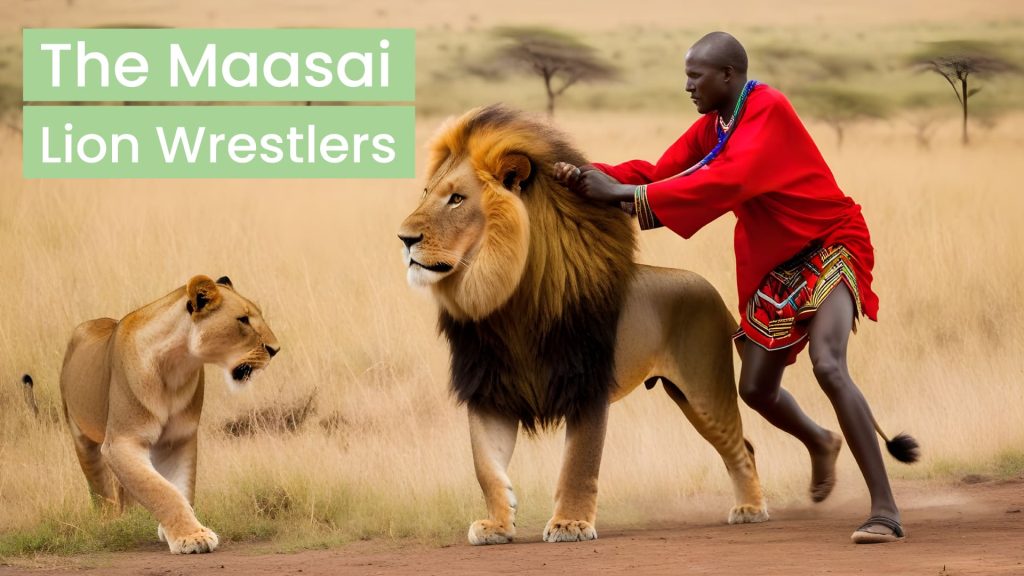masai lion facts
Introduction:
In the heart of Africa’s enchanting Masai Mara lies a world where regal lions roam, their majestic presence capturing the essence of untamed wilderness. In this article, we unravel the mysteries surrounding Masai lion facts, enter the unique characteristics and behaviors that make these lions a captivating subject of study and admiration.
Masai lion facts:
Embark on a captivating journey through the Masai Mara, searching for the secrets of Masai lions. Explore Masai lion facts, delving into their unique features, behaviors, and the pivotal role they play in the untamed beauty and power of the African wilderness.
1-Lifestyle and Habits of African Lions
-
Daily Routines and Activities
Masai lion facts illuminate the daily lives of African lions, creatures bound by routine within the rhythms of the savannah. Commencing with a restful period, they often lounge in the shade to conserve energy during the day’s heat. With the evening’s cool embrace, lions come alive, partaking in social interactions and vigilant territorial patrols.
-
Hunting and Feeding Behaviors
At the core of the lion’s lifestyle is the art of hunting, a skill perfected over generations. Lions are primarily nocturnal hunters, relying on teamwork and strategy to bring down prey.
Social Structure Within the Lion Pride
The social structure of African lions is a fascinating tapestry of relationships, hierarchies, and communal responsibilities. Lions typically form prides, consisting of related females, their offspring, and a coalition of males. This hierarchical structure provides stability and support for pride, ensuring the survival and thriving of its members. Understanding the intricate balance between individual roles within the pride, the nurturing behaviors of lionesses, and the cooperative efforts during hunts sheds light on the rich social tapestry that defines the lifestyle of African lions.
2- Wildlife in the Masai Mara
The Masai Mara, with its sweeping grasslands serves as a canvas for an unparalleled spectacle of wildlife diversity. Beyond the iconic Masai Mara lions, the region teems with a rich tapestry of species, each playing a unique role.
-
Diversity Beyond Imagination
The Masai Mara stands as a living testament to the biodiversity that defines Africa. From towering giraffes gracefully traversing the landscape to elusive leopards silently stalking their prey, the variety of species inhabiting this ecosystem is nothing short of astonishing.
-
Interconnected Relationships
Within the Masai Mara, the interactions between different species create a harmonious symphony. Wildebeests and zebras engage in epic migrations, wildebeest herds drawing the attention of cunning predators like cheetahs and hyenas. The interconnected relationships forge a delicate balance crucial for the survival of each species.
-
The Pivotal Role in Conservation
Comprehending the nuances of Masai lion facts is essential for successful conservation initiatives in the Masai Mara. Dedicated conservationists and researchers tirelessly examine behaviors, migration patterns, and ecological dependencies, formulating strategies to safeguard this delicate web of life.
-
Unique Species Spotlight
Beyond the charismatic megafauna, the Masai Mara unveils a spectrum of unique species — from vibrant birds to elusive reptiles and fascinating insects. Delving into these often-overlooked inhabitants enhances our understanding of the ecosystem’s intricacies, including key Masai lion facts.
-
Conservation Challenges and Triumphs
Despite the splendor of the Masai Mara’s wildlife, conservation challenges persist. Human-wildlife conflict, habitat loss, and poaching threaten the delicate equilibrium. However, dedicated conservation initiatives and community involvement are proving instrumental in safeguarding this natural treasure. In unraveling the details of wildlife in the Masai Mara, we gain a profound appreciation for the interconnectedness of all living beings in this remarkable ecosystem. It is a call to action, urging us to protect and preserve this biodiversity for future generations to marvel at the symphony of life that unfolds in the heart of the Masai Mara.
3-The Masai Mara is nature’s epic masterpiece.
Breathtaking Landscapes
The Masai Mara’s beauty lies not just in its wildlife but also in the breathtaking landscapes that stretch as far as the eye can see. Rolling savannahs, acacia-dotted plains, and meandering rivers create a visual symphony that showcases nature’s artistic prowess.
-
Tourist Attractions: A Glimpse into Nature’s Gallery
For those seeking immersion in nature’s gallery, the Masai Mara offers a plethora of attractions. From hot air balloon safaris providing an aerial view of the landscape to guided bush walks that bring visitors closer to the intricacies of the ecosystem.
-
The Fragile Balance
Despite its grandeur, the Masai Mara’s delicate balance is under constant threat. Human activities, climate change, and other challenges pose risks to this masterpiece. Understanding and addressing these threats are crucial to ensuring that future generations can continue to marvel at the splendor of nature’s creation.
4- How Many Lions in Masai Mara
The Masai Mara hosts a population estimated at 850 to 900 lions, solidifying its status as a pivotal lion conservation area in Africa, highlighting the importance of Masai lion facts.
5- Are Lions Scared of Maasai?
Contrary to popular belief, lions in the Masai Mara do not exhibit a generalized fear of the Maasai people. While there may be occasional conflicts between lions and local communities, the idea that lions are inherently scared of the Maasai is largely a misconception. The relationship between lions and the Maasai is complex, shaped by coexistence strategies and the realities of sharing space in this unique ecosystem.
Conclusion:
As we conclude our expedition through the enchanting Masai Mara, the essence of Masai lion facts remains etched in the fabric of this majestic landscape. The intricate details of their lives, the harmonious coexistence with diverse wildlife, and the delicate balance of nature’s epic masterpiece invite us to cherish and protect this extraordinary realm. Let facts be a beacon, guiding us to appreciate, preserve, and celebrate the timeless wonders of the Masai Mara for generations to come.
FAQ:
1- What do lions do all day?
Lions are known for their periods of rest, spending a significant portion of the day sleeping or lounging. They become more active during the cooler evenings and early mornings, engaging in hunting, socializing, and patrolling their territory.
2- What are 20 facts about lions?
- Lions are the only cats that live in groups called prides.
- They are powerful hunters and can take down prey much larger than themselves.
- Lions can reach speeds of up to 50 mph in short bursts.
- The roar of a lion can be heard from up to 5 miles away.
- Lions are primarily nocturnal, more active during the night.
- Cubs are born blind and helpless, relying on their mother for care.
- The mane of a male lion darkens with age, indicating maturity.
- Lionesses are the primary hunters in the pride.
- Lions may sleep up to 20 hours a day.
- They use their distinctive roars to communicate with pride members.
- Lions have retractable claws for gripping prey.
- The gestation period for lionesses is about 110 days.
- Lions are opportunistic eaters and can consume large amounts of food at once.
- A group of lions is known as a pride, consisting of related females.
- Lions mark their territory by scent marking and roaring.
- Mane color can vary from blond to black.
- Lionesses synchronize their reproductive cycles within a pride.
- Cubs start learning to hunt around the age of six months.
- Lions have powerful jaw muscles for biting and gripping.
- Conservation efforts are crucial due to declining lion populations.







[…] Masai Lion […]
[…] know about The Maasai, Lion Wrestlers Read this […]
[…] Know About masai lion facts read this article […]